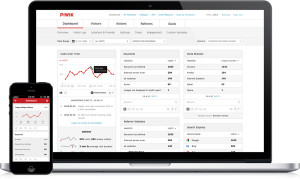Google Analytics is almost ubiquitous as the solution for collecting useful information about how your website is being used by visitors. It is a good product, and has evolved over the years to be very flexible indeed.
But since it first launched, my opinions of Google have certainly changed, as have many others. Without wishing to get into a debate on the subject, there definitely is a market for a competitor to this very useful tool that might free us of that reliance on Google infrastructure, and be more respecting of our visitors, by means of initatives like Do Not Track.
I recently deployed Piwik, an open source PHP-based application intended to replace Google Analytics. A full disclosure — it will not be as full-featured as Google Analytics for those people using the full power of that solution, but it puts the power and control back in your hands. Moreover, it uses a very similar-looking (perhaps even largely compatible) JavaScript API, meaning I had to do little work to figure out how to track the events that I wanted.
With built-in support for avoiding the use of cookies altogether, you can sidestep the well-meaning, but ridiculously ill-conceived EU Cookie law and its onerous “we use cookies!” notifications entirely, while still delivering enough tracking capability for many simpler analytics applications where detailed insights into repeat visits aren’t so important.
I haven’t made the time to replace Google Analytics on this site with it yet, but that is on my list of things to do! Right now, I have some custom code server-side that detects your Do Not Track status and suppresses the Google Analytics JavaScript entirely, but Piwik would do away with that need for complexity.
It might not do enough for your application — but as a way to put your money where your mouth is and genuinely support the user’s right to give and withdraw consent for tracking, it is most definitely worth a look.


